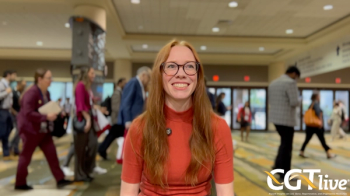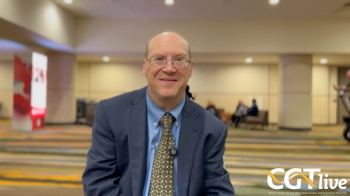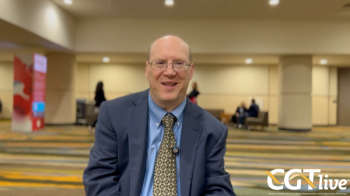
Anixa Biosciences Seeks Protocol Change to Enable Repeat Dosing in Trial for Ovarian Cancer CER-T
Anixa noted that it had previously obtained clearance of a single-patient investigational new drug application to redose a patient in the trial.
Anixa Biosciences and its partner Moffitt Cancer Center have submitted a protocol amendment to the FDA for their ongoing phase 1 clinical trial (NCT05316129) evaluating Anixa's novel follicle stimulating hormone receptor (FSHR)-targeting chimeric endocrine receptor (CER) T-cell therapy for the treatment of ovarian cancer, aimed at enabling the use of second doses for patients who may benefit.1
Anixa noted that it
"In initial phase 1 clinical trials, it is customary to begin with low, often subtherapeutic cell doses to verify safety, before increasing the dose levels,” principal investigator Robert Wenham, MD, MS, FACOG, FACS, the chair of the Gynecologic Oncology Department at Moffitt, said in a statement.1 “In our study, the patient approved for a second dose by the individual IND received the starting, lowest dose. While initially meeting the criteria for progression due to size of her predominate tumor, her cancer has since remained relatively stable and she has not received additional therapy since her first infusion. We are hoping a second, higher dose may improve her overall response and outcome. In general, we anticipate that higher cell doses will lead to efficacy, but for solid tumors, a second dose may be needed in a subset of patients to improve the rate and durability of responses."
The CER-T therapy is Anixa’s modified chimeric antigen receptor (CAR) T-cell therapy approach that targets an endocrine receptor (FSHR) that is exclusively expressed at immunologically relevant levels on the granulosa cells of the ovaries.2 Notably, the study, which is expected to enroll approximately 48 participants in total, is evaluating intraperitoneal delivery against intravenous delivery of the CER T-cells.
"We hope to get approval from regulatory agencies shortly, to enable second doses for the appropriate patients,” Amit Kumar, PhD, the chairman and chief executive officer of Anixa Biosciences, added to the statement.1 “We are clearly enthusiastic about the progress of this trial and are looking forward to treating additional patients.”
So far, 3 patients have been treated in the trial at a dose of 1x105 CER T-cells (cohort 1) and 3 patients have been treated at a dose of 3x105 CER T-cells (cohort 2).2 According to
"We are highly encouraged by the favorable safety profile observed thus far in both the first and second patient cohorts, and are eager to evaluate a higher dose in the next cohort,” Kumar said in a June 2024 statement.2 “We are particularly encouraged by a notable response in 1 of the patients in the first cohort, even though the dosage was considered a subtherapeutic level. Our aim is to maintain a positive safety profile as we escalate dosing, with the goal of demonstrating additional objective evidence of efficacy. Unlike conventional CAR-T cell therapies, which have achieved amazing results in various hematological cancers, they have not been effective in solid tumors. In contrast, we believe Anixa's novel technology has the potential to make CAR-T effective in ovarian cancer and perhaps across multiple solid tumor types. Our unique and highly targeted CER-T approach targets the FSHR, which is exclusively expressed on ovarian cells. A potential dual mechanism of action is operating with our therapy targeting tumor vasculature by starving or shrinking the tumor from the inside out, as well as direct targeting of ovarian cells."
REFERENCES
1. Anixa Biosciences announces submission of protocol amendment for CAR-T trial. News release.Anixa Biosciences, Inc. September 30, 2024. Accessed October 1, 2024. https://ir.anixa.com/press-releases/detail/1052/anixa-biosciences-announces-submission-of-protocol
2. Anixa Biosciences treats sixth patient in its ovarian cancer CAR-T clinical trial. News release. Anixa Biosciences, Inc. June 24, 2024. Accessed October 1, 2024. https://ir.anixa.com/press-releases/detail/1043/anixa-biosciences-treats-sixth-patient-in-its-ovarian
Newsletter
Stay at the forefront of cutting-edge science with CGT—your direct line to expert insights, breakthrough data, and real-time coverage of the latest advancements in cell and gene therapy.
















































